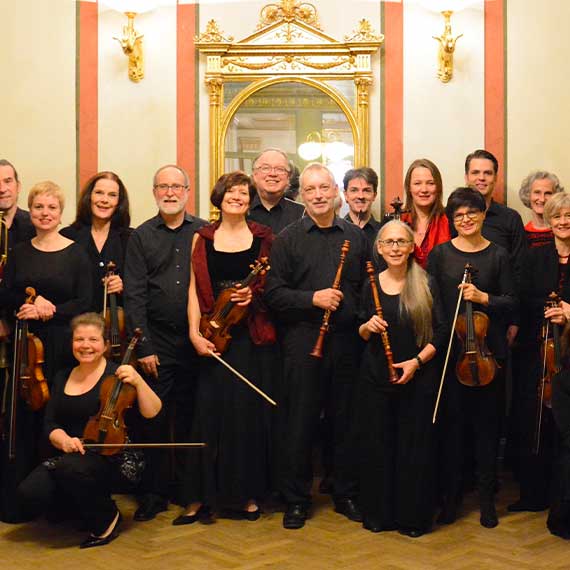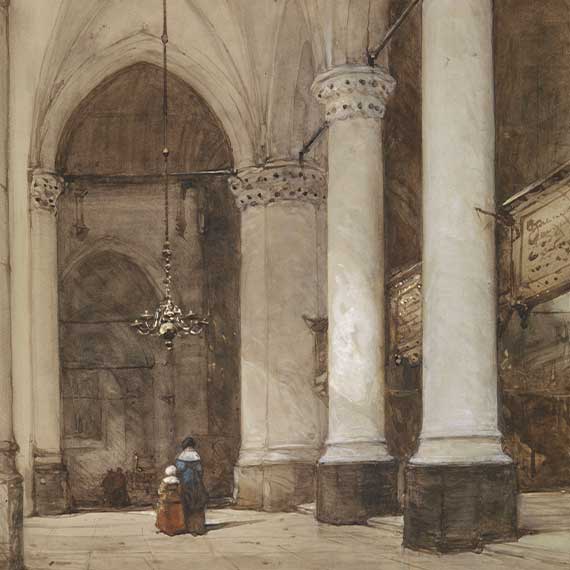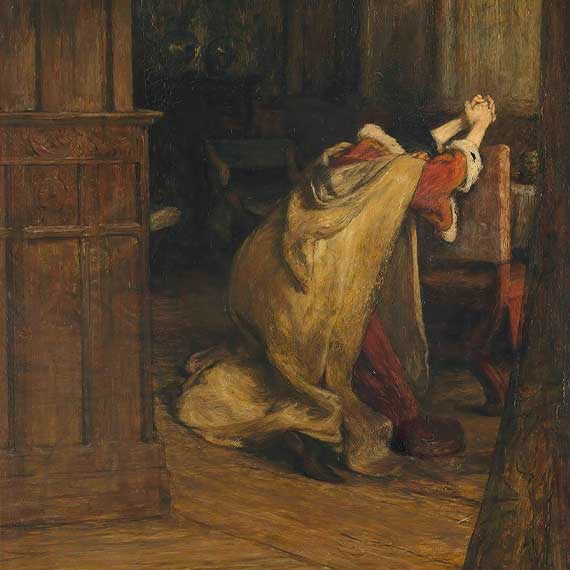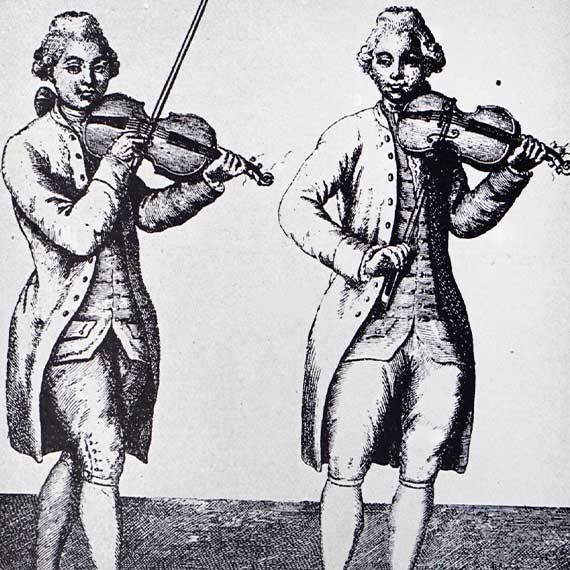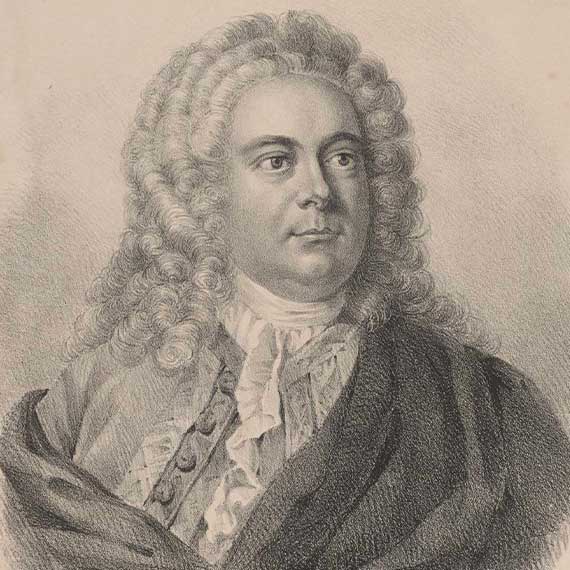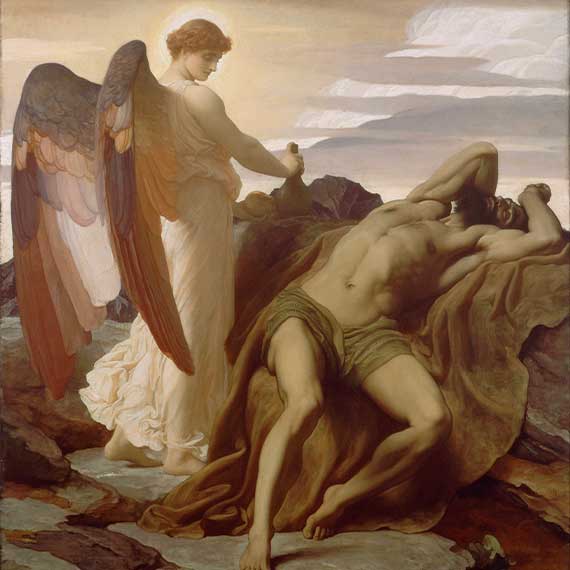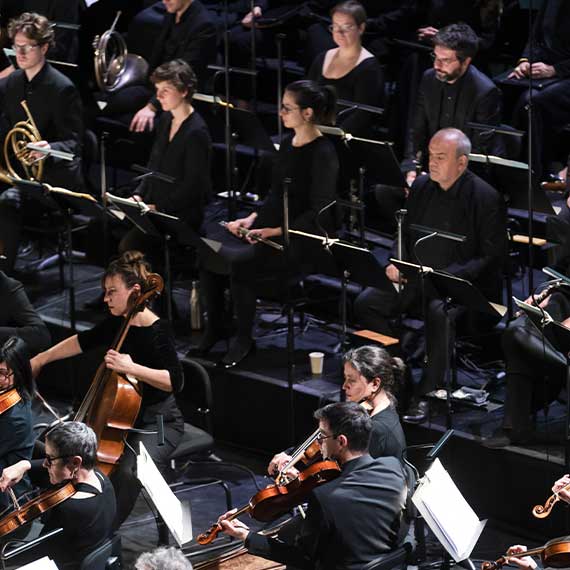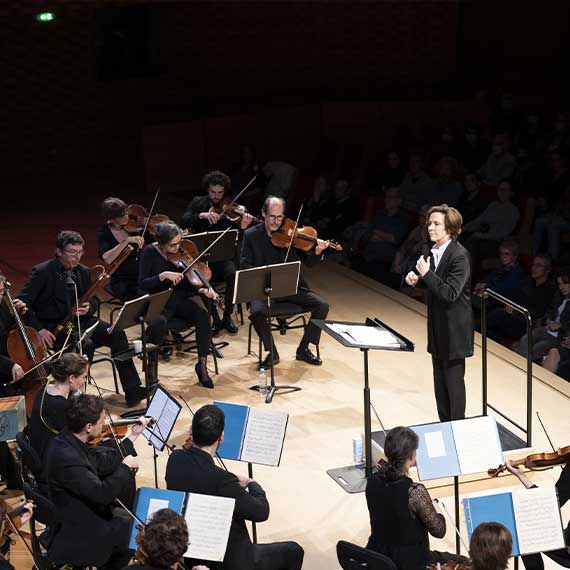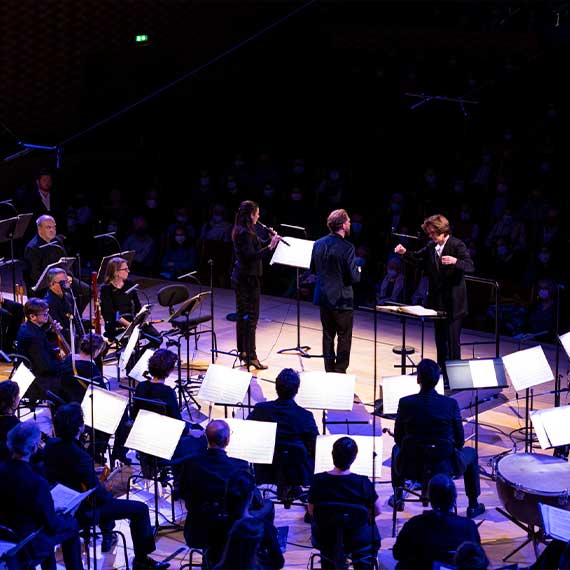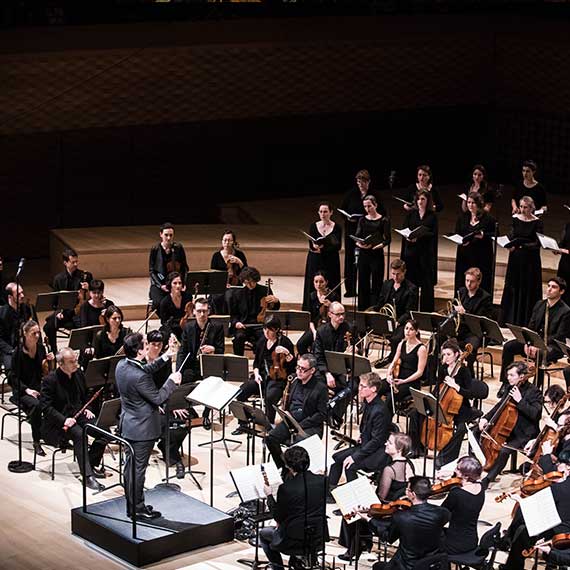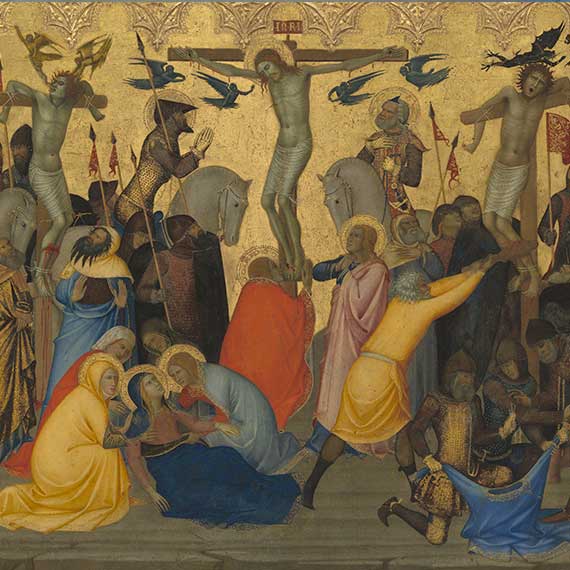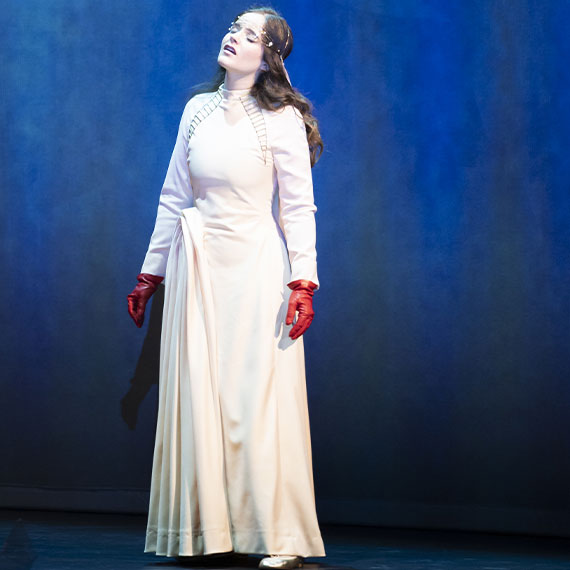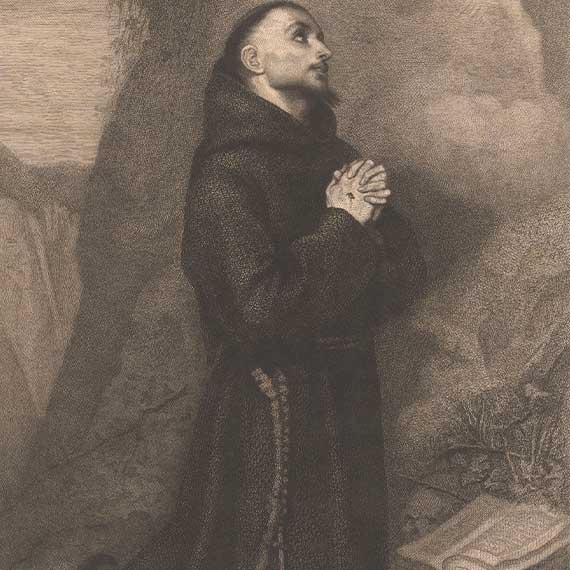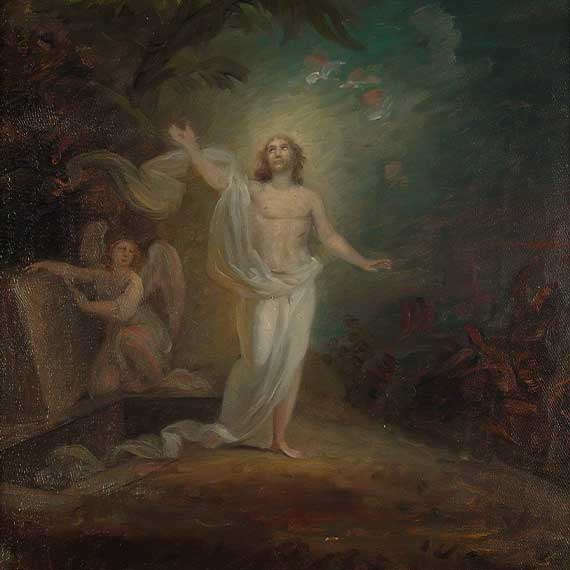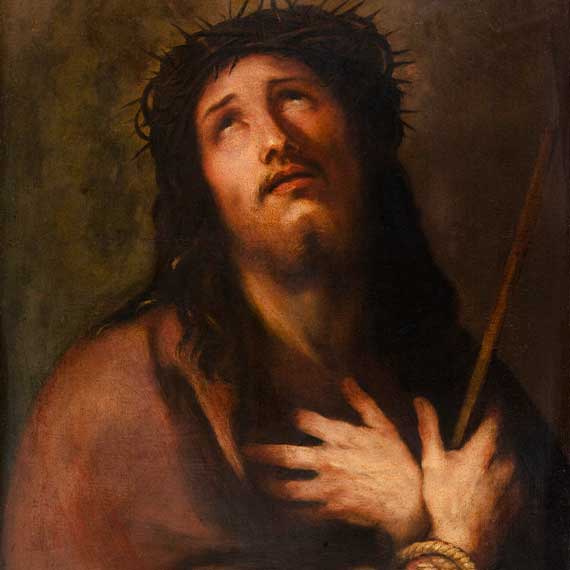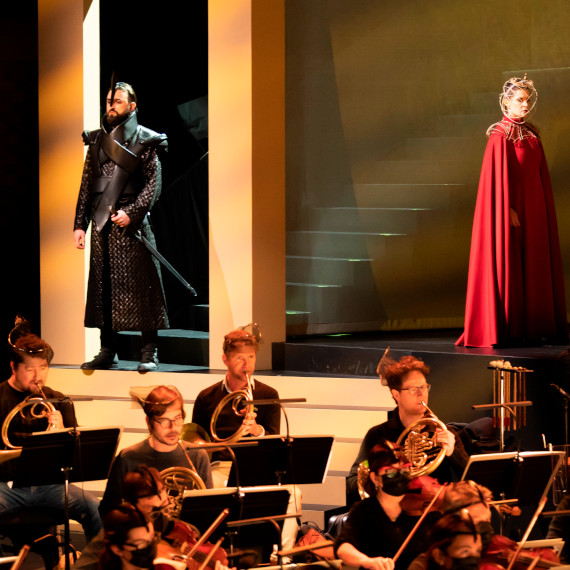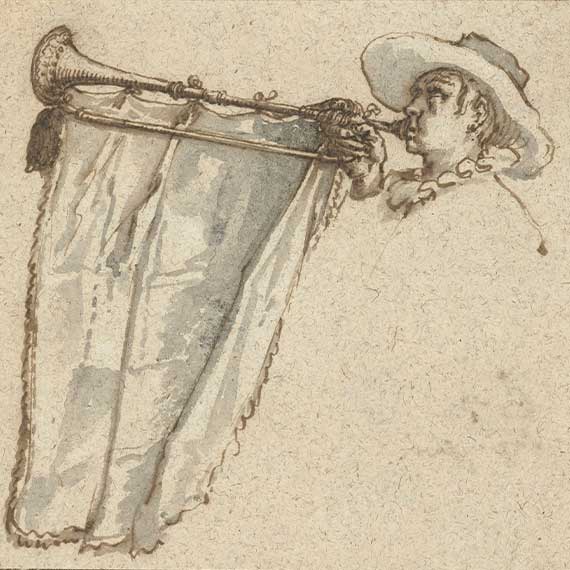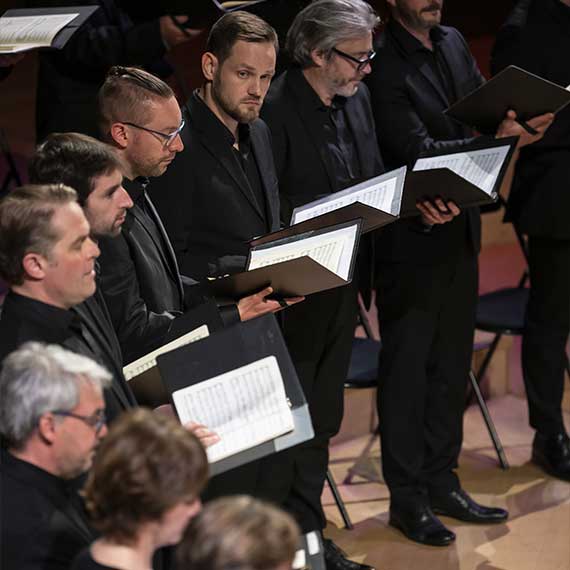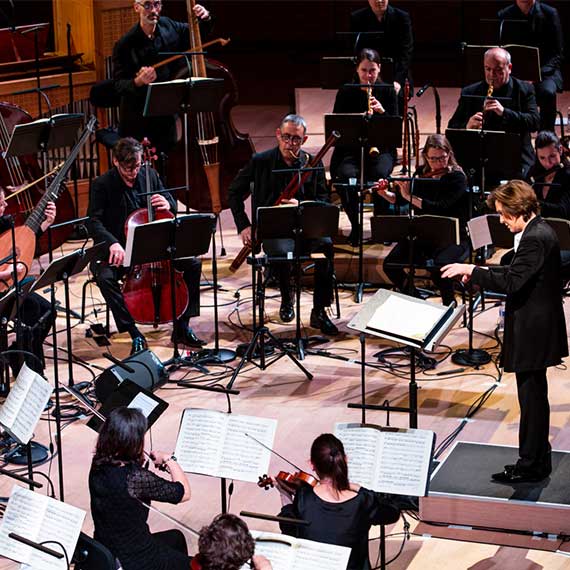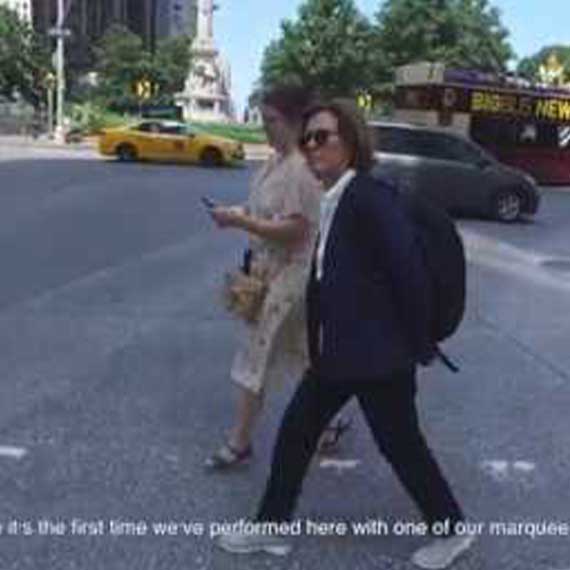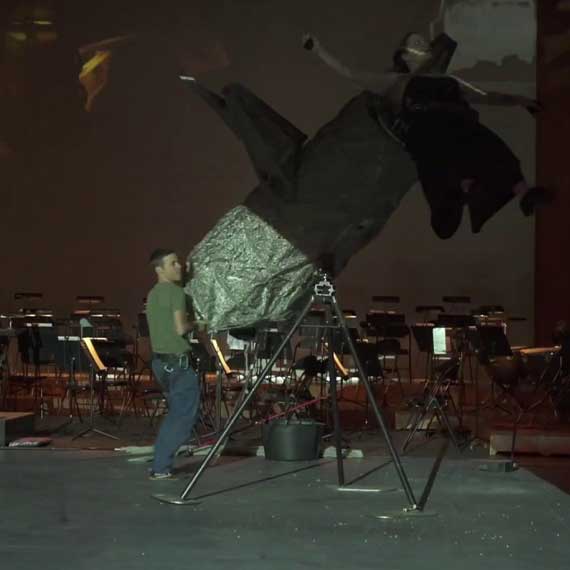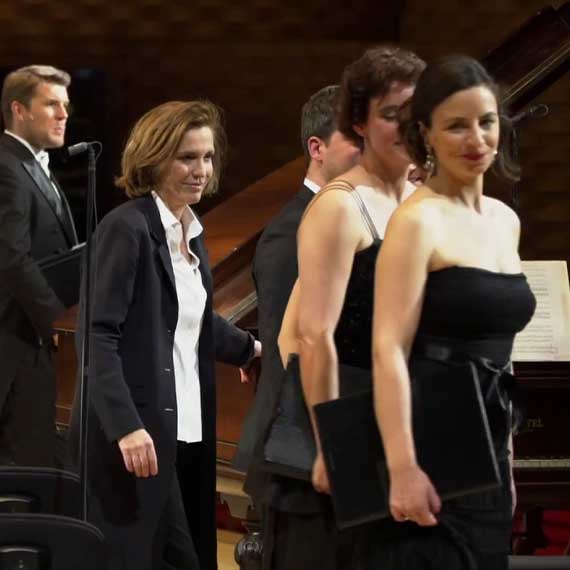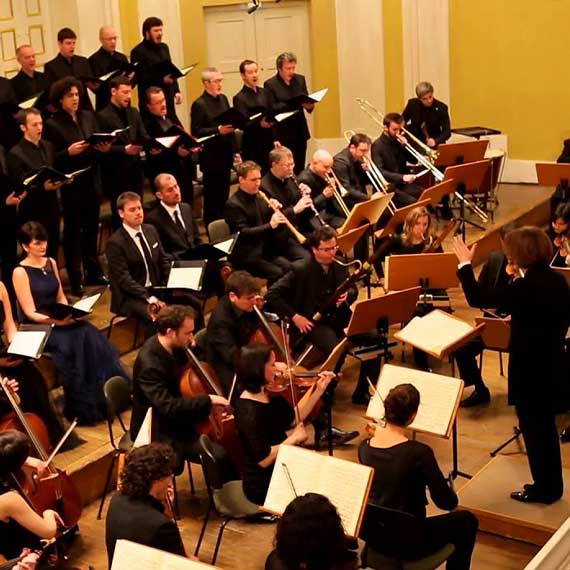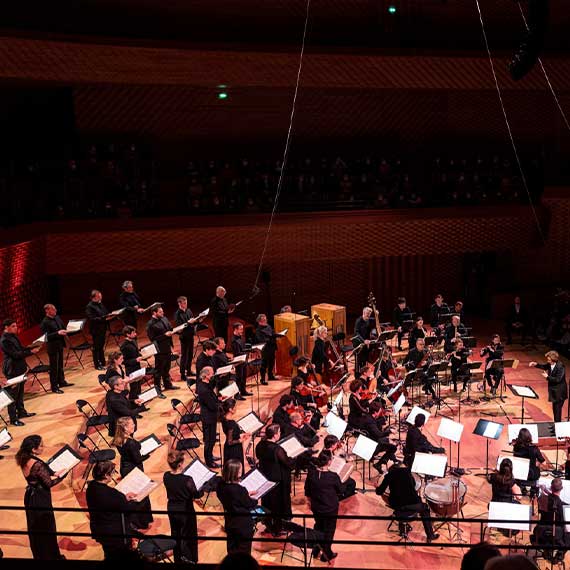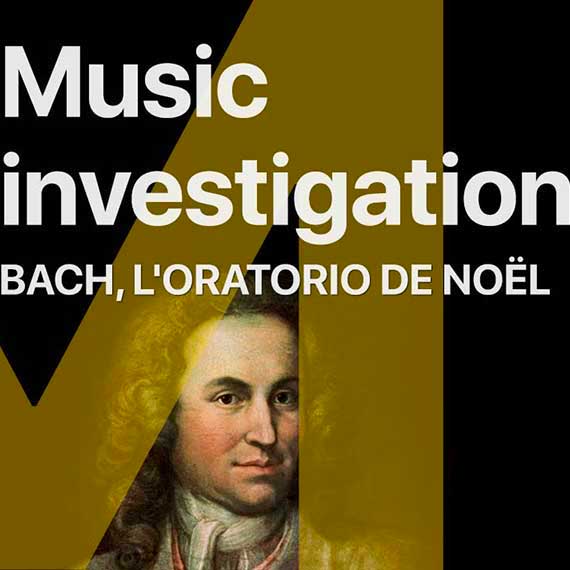The Bohemian
and the Redeemer
Richard Bratby
[Contenu en anglais]

Noseless in Munich
Creation date and place
It premiered in Florence in 1776 and the following year was performed in Munich, at the court of the music-loving Elector Maximilian III. Joseph.
Time Period
Classical
Duration
approx. 2 h 15 min
Dimensions
Orchestra, choir and soloists
Did you know?
The oratorio Abramo ed Isacco (Abraham and Isaac), originally titled Isacco, figura del redentore (Isaac, figure of the saviour), is Mysliveček’s last oratorio and represents one of the absolute highlights of his entire oeuvre.
If it were not for his face, he would be completely the same, full of fire, spirit and life.
When Wolfgang Amadeus Mozart visited his friend Josef Mysliveček (1737–81) in Munich, in the first week of October 1777, he had to overcome a certain reluctance. Mysliveček was convalescing in the city’s Ducal Hospital – an elite institution, usually reserved for members of the Electoral household. And yet Wolfgang held back. He seemed inhibited, even embarrassed. ‘Why have I not as yet written anything about Mysliveček?’ he wrote to his father Leopold, back in Salzburg, on 11 October:
Because I was only too glad not to think of him; for when he is spoken of I invariably hear how highly he praises me, and what a kind and true friend he is of mine; but then I feel pity and distress. People describe his condition to me, and I’m almost distracted.
The painful truth – known through rumour to both Leopold and Wolfgang – was that Mysliveček had recently undergone disfiguring facial surgery. The story, as he told it, was that a stagecoach accident had caused the onset of bone cancer, prompting a less-than-skilled doctor to burn away much of his nose with acid. But to the 18th-century mind, an illness that destroyed the nose had altogether more sordid connotations – particularly when, like the footloose bachelor Mysliveček, the sufferer had a reputation as a ladies’ man. Mozart made arrangements to meet him in the well-ventilated space of the hospital garden; such was his fear of cross-infection.
I called on the manager of the Hospital to ask if I might see my friend in the garden, which I thought best […] When he [Mysliveček] came up to me, we shook hands cordially. ‘You see’, said he, ‘how unfortunate I am.’ These words and his appearance, of which Papa will already have heard, so wrung my heart that tears came to my eyes and I could only say, ‘I pity you from my heart, my dear friend.’
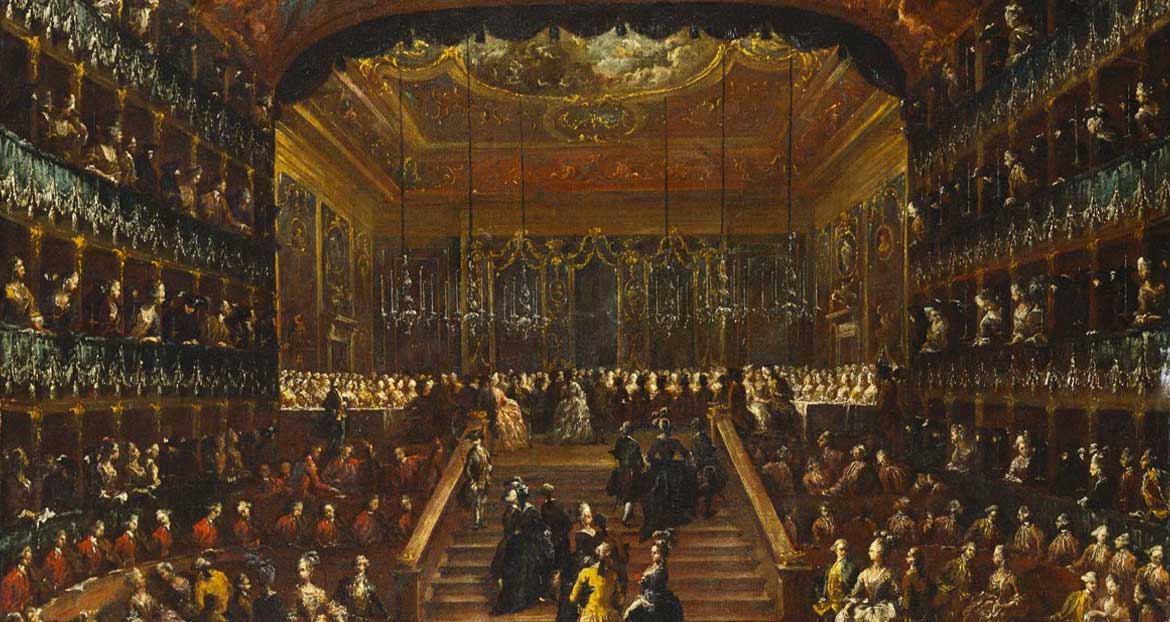
The Dinner and Ball in the Teatro San Benedetto Venice
Francesco Guardi - Wikimedia commons
And there, for much of two centuries, the musical world was content to leave Josef Mysliveček: a footnote in Mozart biographies. Possibly that Czech name had something to do with it. Mozart called him variously Misliwetcek and Misliweczeck, Charles Burney gave his name as Misliwiceck. To the tenor Michael Kelly he was Metzlevisic, and in Italy – where he enjoyed the greatest successes of his career – they abandoned the unequal struggle and simply called him ‘il Boemo’ (the Bohemian) or ‘Venatorino’ (the little hunter – a literal translation of his family name). It’s hard to disagree with his biographer Daniel E. Freeman that ‘had Mysliveček been born in Germany, the modern-day revival of his reputation and works would have fared much better’.
But at this particular unhappy moment in 1777, Mysliveček himself was far from finished; clearly, in his own eyes his illness was only a temporary setback for a man who had already composed 17 highly successful Italian operas. He spoke animatedly to Mozart of the operatic world, and promised to use his contacts in Naples to obtain a commission for the younger man. His very presence in Munich was by command of the Elector – to perform a work that was already recognized across Europe as his masterpiece. Mozart ends on a note of pity: ‘Imagine what agony he must have suffered!’ But not before mentioning that ‘
If it were not for his face, he would be completely the same, full of fire, spirit and life; a little thin, of course, but otherwise the same excellent fellow. All Munich is talking about the oratorio which he produced here, Abramo ed Isacco […].
The Miller’s Son
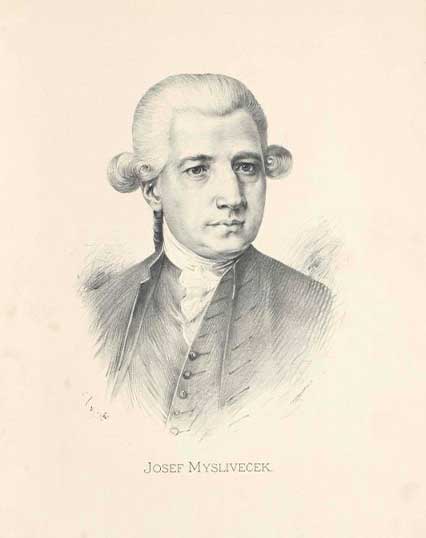
Josef Mysliveček
Jan Vilímek - Österreichische Nationalbibliothek
Even in his own time, much about the life of Josef Mysliveček remained obscure – possibly a deliberate choice for a man who valued his independence, and whose financial dealings brought him close to gaol on at least one occasion. Charles Burney, writing in 1773, asserted that Mysliveček ‘was brought up at a village school in Bohemia, and afterwards studied counterpoint at Prague’. In fact, he was the heir to a successful flour miller and inherited a part-share in several watermills on the Vltava in central Prague (one of which stood on the site of the current Smetana museum). He qualified as a Master Miller, before selling out of the family business in the early 1760s to study music, first in Prague, and then in Venice. Following the triumphant premiere of his opera Il Bellerofonte in Naples in 1767 he enjoyed a run of successes (including a setting of Metastasio’s La clemenza de Tito) that would make him the pre-eminent composer of opera seria in Italy in the 1770s.
Mysliveček never needed (or apparently wanted) to put down roots – he lived by his reputation and his genius, though this freelance lifestyle (which must have looked distinctly appealing to the young Mozart) rapidly depleted his family fortune. Exhaustion, just as much as disease, seems to have caused his early death after the failure of his 24th opera Armida in Milan in late 1779. When he died (in Rome, on 4 February 1781) he was living in poverty, and left only a few possessions: a sword, some loan documents, and a single outfit of the elegant clothing necessary for him to ply his trade. A gold watch remained in pawn, and a sympathetic English gentleman, James Barry (possibly one of Mysliveček’s students), paid for his funeral. But at the height of his success, Mysliveček’s reputation was unchallenged, and the quality of his finest music shows why. In 1928, the musicologist Felice Boghen, stumbling on a manuscript of the oratorio Abramo ed Isacco, announced it to the world as a lost masterpiece by Mozart.
No connoisseur in the 1770s would have made the same mistake. Oratorios occupied a particular place in the 18th-century musical ecosystem: ostensibly sacred works, they were typically performed during Lent, when theatres were closed and operas were therefore unstageable. Designed to be entertaining as well as edifying, but performed without scenery or costumes, they were effectively concert operas on religious subjects, and when they pleased an audience they could be almost as successful as staged operas. Mysliveček wrote Abramo ed Isacco for Lent 1776 and it received its premiere in the Casino della Nobiltà in Florence on 10 March that year, with the tenor Valentin Adamberger (Valentino Adamonti, Mozart’s first Belmonte) as Abraham. It was an immediate success, receiving at least 20 performances in Italy and beyond over the next few years – including the one that Mozart referred to, given by royal command at the Salvatortheater in Munich in Lent 1777. The entire run sold out.
Prima le parole, dopo la musica
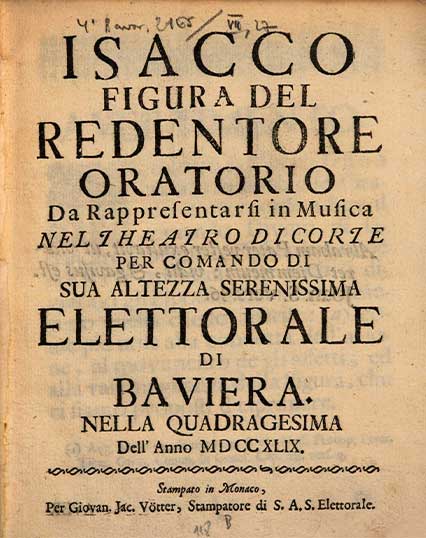
Isacco figura del redentore - title page of the libretto
München, Bayerische Staatsbibliothek
By now, Mysliveček had an instinct for drama. Abramo ed Isacco sets a libretto by Pietro Metastasio (1698–1782), the pre-eminent opera seria librettist of the day, and the (passive) co-creator of 16 of Mysliveček’s 26 operas. It was entitled Isacco figura del Redentore (Isaac, figure of the Redeemer – Mysliveček seems to have changed the name for the Munich performance) and it was first published in 1740. More than thirty composers, including Jommelli and Dittersdorf, had set the same text prior to Mysliveček, and its appeal was clear. Metastasio had taken one of the most dramatic episodes of the Old Testament – God’s command, in the Book of Genesis, that Abraham should sacrifice his son Isaac – and given it an unambiguously Christian message. Abraham’s readiness to sacrifice his only child is shown to prefigure the coming sacrifice of the Son by the Father upon the cross. Isaac is therefore the prototype of the Redeemer, a point that Metastasio makes clear in the closing sections of his libretto.
But more than that, Metastasio turns the biblical story into an emotionally-charged human drama, ripe for quasi-operatic treatment. As well as Abraham and Isaac, and an angelic messenger, Metastasio brings in Abraham’s wife Sarah, purely (as he admitted) to heighten the emotional stakes. ‘Scripture leaves it unclear whether Abraham informed his wife of the divine command to slaughter his son,’ he notes on the libretto. ‘We agree with those who believe that Sarah knew of the divine command – and this suits our project all the better, stirring the emotions and balancing the story.’ But in classic opera seria style, he also adds a completely fictional character, Gamari (a bass), to serve as confidant and comforter to Abraham. Emotional outbursts need a recipient, after all.
Prefiguring the Redeemer

Christ The Redeemer
Francesco Bissolo - Artvee
Mysliveček’s setting bursts into life with a brilliant orchestral Overture, and immediately throws us into a domestic scene between Abraham (sung by a tenor) and Isaac (originally written for the castrato Tommaso Guarducci). Although he makes only limited use of the chorus, Mysliveček gives full rein to his skills as a musical dramatist, writing richly characterized arias accompanied by the sizeable orchestra at his disposal. Abraham’s ‘Entra l’uomo’ is accompanied by a pair of bassoons; Isaac’s arias – befitting his status as a proto-Christ – are expansive, expressive and relatively bare of superfluous decoration. ‘A me le sue ritorte’ finds him accompanied by muted strings, and in the exquisite ‘Madre, amico, ah non piangete!’ – as he assures the distraught Sarah of his resignation to divine will – flutes and divided violas caress the vocal line. Sarah takes a central part in the Terzetto ‘Lascia che un bacio imprima’ at the end of Act I: father and son are present too, but only Sarah’s line remains constant, as the three family members explore the implications of God’s command around the unwavering certainty of Sarah’s maternal love.
And yet (and it’s a common response to late 18th-century sacred music) it all sounds gloriously operatic; even cheerful. The operatic qualities, of course, are intentional; the cheerfulness merits some comment. Mysliveček sets all but two numbers in major keys, and the oratorio begins, and closes, in the divine sunlight of C major. The reason lies in that original title, Isacco figura del Redentore. If this story is to be understood in the Christian sense that Metastasio and (clearly) Mysliveček intended, it’s as a promise of redemption: the events depicted cannot be anything other than good news.
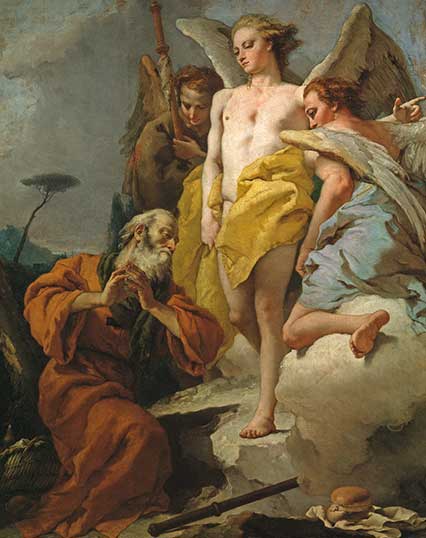
Abraham et les trois Anges
Giambattista Tiepolo - Wikimedia commons
And yet, twice in the score, the shadows lengthen and the music drops into the minor key. The first is Abraham’s accompanied recitative ‘Eterno Dio!’ – a tumultuous, intensely dramatic outburst of grief and disbelief at the divine command. (Some believe that Mozart had it in mind 15 years later when he wrote the opening scene of Die Zauberflöte – and they may have a point.) And the other is Sarah’s Act II aria ‘Deh parlate’ – in C minor, the key at the opposite extreme from divine goodness, and a fierce outpouring of emotion as she struggles to come to terms with God’s command.
The whole of Abramo ed Isacco is filled with such riches: the ebullience, the theatrical imagination and the expressive openness of a composer who – in his time – was regarded as the equal of any of his contemporaries. At moments like these, Mysliveček steps beyond mere convention, and shows us, in unambiguous terms, just why he was so highly regarded: as a natural dramatist, and an artist whose power to create and express human emotion deserves to be appreciated on no terms but his own.
Autres ressources associées
Contenu lié
Bibliothèque
Retrouver les ressources associées à cette œuvre dans notre bibliothèque numérique.
Vous aimerez aussi
Dans le même thème

